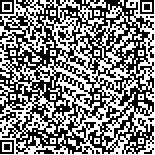袁天懿,秦玲,唐建良,唐潮浪,赵金龙.前庭康复训练联合认知行为疗法治疗慢性主观性头晕伴发焦虑的疗效观察[J].中华物理医学与康复杂志,2016,38(12):938-941
扫码阅读全文

|
| 前庭康复训练联合认知行为疗法治疗慢性主观性头晕伴发焦虑的疗效观察 |
|
| |
| DOI: |
| 中文关键词: 前庭康复 认知行为疗法 慢性主观性头晕 焦虑 |
| 英文关键词: Vestibular rehabilitation Cognitive behavioral therapy Dizziness Anxiety |
| 基金项目: |
|
| 摘要点击次数: 4150 |
| 全文下载次数: 5841 |
| 中文摘要: |
| 目的观察前庭康复训练(VR)联合认知行为疗法(CBT)对慢性主观性头晕(CSD)伴发焦虑的疗效。 方法将98例CSD伴发焦虑症状的患者,按照随机数字表法分为试验组(50例)和对照组(48例),所有入组患者汉密尔顿焦虑量表(HAMA)评分≥14分、汉密尔顿抑郁量表(HAMD)<18分。2组患者均给予常规的前庭功能康复训练,试验组在此基础上给予CBT。在治疗前和治疗第4周、第8周,采用眩晕残障程度评定量表(DHI)、HAMA对2组患者进行疾病严重程度及焦虑状态评定。 结果治疗前,2组患者各项指标间比较,差异均无统计学意义(P>0.05)。治疗第4周,2组HAMA、DHI及DHI各因子评分较治疗前均明显下降,差异有统计学意义(P<0.05)。治疗8周,试验组HAMA评分[(8.71±3.64)分]、DHI总分[(28.83±12.80)分]、DHI各因子[躯体因子(9.04±4.15)分、情感因子(8.96±4.30)分和功能因子(10.83±4.65)分]及对照组各项评分[HAMA评分(11.24±3.15)分、DHI总分(38.40±11.59)分和DHI躯体因子(12.31±3.88)分、情感因子(12.31±3.86)分、功能因子(13.78±4.07)分]较治疗前、治疗4周均有明显改善,差异有统计学意义(P<0.05)。治疗第4、8周,试验组HAMA、DHI及DHI各因子评分明显低于对照组,差异有统计学意义(P<0.05)。 结论VR联合CBT有利于CSD患者的功能恢复,显著改善其所伴发的焦虑症状。 |
| 英文摘要: |
| Objective To assess the efficacy of combining vestibular rehabilitation with cognitive behavioral therapy in treating chronic subjective dizziness (CSD) and the associated anxiety. MethodsA total of 98 anxious CSD patients were randomly divided into an experimental group (n=50) and a control group (n=48). All of the patients′ scores on the Hamilton anxiety scale (HAMA) were no less than 14 and their scores on the Hamilton depression scale (HAMD) were less than 18. Systematic vestibular rehabilitation was given to the patients in the control group, while this was combined with cognitive behavioral therapy for the patients in the experimental group. All patients were evaluated using a dizziness handicap inventory (DHI) and the HAMA before treatment and in the 4th and 8th week of the treatment. ResultsBefore the treatment there was no significant difference between the 2 groups in any of the assessments. After 3 weeks of treatment, the average HAMA score, DHI total score and its factor scores had decreased significantly. Four weeks later, the average HAMA score, DHI total score and its factor scores for somatization, emotion and function had improved significantly in both groups compared with before treatment and the scores after 3 weeks. After 3 and 7 weeks of treatment, the average HAMA score, DHI total score and its factor scores of the experimental group were significantly lower than those of the control group. ConclusionCognitive behavioral therapy amplifies the effects of vestibular rehabilitation in treating persons with CSD, in part by significantly relieving their anxiety. |
|
查看全文
查看/发表评论 下载PDF阅读器 |
| 关闭 |